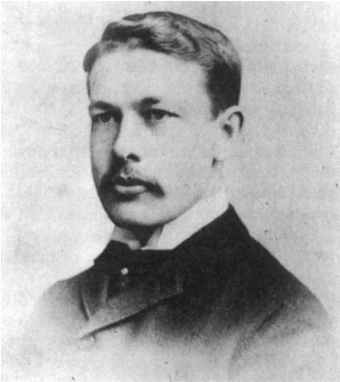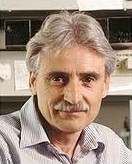Some Basic Facts About Cancer
When the genes in normal (somatic) cells mutate cell behaviour may change over time leading to cancer. Mutations are a normal part of the life of a cell. That’s because when cells divide they replicate their DNA but imperfectly.
In a previous blog we talked about telomeres, the ends of the DNA strands in our chromosomes and how the telomeres shorten over time with each cell division eventually leading to cellular death. But it is not just telomeres that change during cell division. Other parts of the DNA can get scrambled or lost. We call these changes mutations. Since mutations happen all the time why do some become cancerous while others remain benign?
Medical researchers suspect that specific mutations in sections of our DNA that regulate the cell life cycle, when accumulated over time, cause cancer. Mutations that govern other cellular functions appear to have no malignant implications.
Here are some additional facts about cancer.
- Less than 5% of cancers are familial, that is, inherited. So when you are told breast cancer runs in your family this is representative of a very small percentage of all the cancers that doctors see.
- Most cancers happen in older people and are not inherited. They result from accumulated DNA mutations in cells over a lifetime.
- Some cancers result from epigenetic changes, that is external factors such as environment, food and nutrition and lifestyle that create DNA mutations.
As researchers study cancer they are discovering new ways to treat it and reviewing some old ideas that showed promising results in the past. Let’s look at where we were with cancer, where we are today, and where we will be in the near future in the 21st century.
Seeking a Vaccine that Cures Cancer
Does the name William Coley ring a bell? For most of you, probably not. Born in 1862, Dr. Coley, an American surgeon who decided to devote himself to finding a cure for cancer, was the first to note that exposure to an infection could arouse a person’s immune system to shrink tumors.

Dr. Coley studied sarcoma (bone cancer) at his New York hospital and identified a prior case of a German immigrant who had been operated on several times to excise a tumor in his left cheek. Each time the tumor regrew and after the final operation the remaining wound became infected. Surgeons were convinced that the man’s case was terminal but 4-1/2 months after he was discharged the tumor had vanished. When Dr. Coley studied the case he discovered that Streptococcus Pyogenes, a common bacterium that causes strep throat, was the source of the wound infection. The history of the case showed that the man had several outbreaks of fever and these outbreaks coincided with dramatic changes to the tumor. Dr. Coley concluded that the infection had saved the man’s life by stimulating his immune system to eradicate not only the bacterium but also the cancer.
Dr. Coley tested his theory on late-stage sarcoma patients first injecting them with live Streptococcus Pyogenes bacterium. The injections caused the tumors to shrink but in two cases the strep infections killed the patients. Dr. Coley then experimented with heat-treated bacterium injections. His first patient was a 16-year old boy suffering from a massive abdominal tumor. Known as Coley Fluid and later Coley’s Toxin, when injected into the tumor mass, produced the symptoms of an infectious disease (fever and chills) but not the full-blown illness itself. Repeat injections caused the tumor to shrink and eventually disappear. With no further cancer treatment the patient was discharged and survived another 26 years. Death was from a heart attack and not cancer.
Today the work of Dr. Coley continues at the Cancer Research Institute in New York. Founded by Dr. Coley’s daughter, the Institute studies how our immune system responds to cancer. In the 1970s doctors at the institute discovered that Bacille Calmette-Guerin or BCG could be used to treat early onset cancer of the bladder. The Institute has also studied cell proteins, called cytokines, and their immunotherapeutic effect on tumors.
Far from being Coley’s Toxin, seen by many in the medical establishment as quackery, current research is proving that Dr. Coley’s approach may lead to multiple cancer vaccines similar to the HPV cancer vaccine used to prime the immune system to kill human papillomavirus, a cause of cervical cancer.
Provenge is a vaccine developed by Dendreon, a company in Seattle. Designed to initially treat late-stage prostate cancer, Provenge is patient-specific. Cells from a patient are collected and then exposed to a chemical bath that contains cytokines that activate the immune system to attack the cancer. The cells are reinjected into the patient over the period of a month. Clinical trials on 512 advanced prostate cancer patients have been encouraging with 1/3 of the vaccinated patients remaining alive after 3 years. Plans are to introduce Provenge into earlier stage prostate cancer clinical trials.
We now know through the legacy of Dr. Coley that immunotherapy works. But what is the actual mechanism within our cells that leads to cancer? Research using baker’s yeast is yielding some exciting results.
Why Yeast Holds Clues to Curing Cancer
Saccharomyces cerevisiae is baker’s yeast, the yeast we humans have been using for milennia to make bread and fermented beverages. When a biologist, Leland Hartwell, decided to study cancer he chose yeast to help him model and understand the cell cycle.

Hartwell was able to identify more than 100 genes directly involved in yeast cells that impacted life cycle. He called these Cell Division Cycle genes or CDCs. Hartwell identifed specific yeast genes responsible for different parts of the cell cycle and found similar characteristics in human cells. Since CDC genes either stimulate or inhibit cell division at very specific times in the cell lifecycle, Hartwell was able to identify the genes that didn’t operate in a normal manner. These included:
- Oncogenes – genes that act as if they were operating in hyperdrive
- Tumor Suppressor Genes – genes that inhibit runaway cell division
- Checkpoint and Repair Genes – genes that detect damage to the DNA and attempt repairs
Any mutation to these genes could lead to what he described as driving with a stuck-accelerator and broken-brakes with no awareness that something has gone wrong resulting in out-of-control cell replication and the development of cancerous tumors.
What are the implications of this research in our search for cures for cancer in humans? Knowing that mutations in genes that control the lifecycle of our cells causes cancer should allow us to develop targeted therapeutic drugs specifically aimed at stopping runaway tumor growth. The tailor-making of drugs, called pharmacogenomics, should result in patient-specific cancer chemotherapy treatment without the side effects we normally associate with today’s treatments.
Having discovered the genetic mechanism that fuels cancer, the challenge is to find a way of delivering the cure and scientists may have discovered that answer. Read on.
RNA, Nanotechnology and Cures for Cancer
We’ve talked about Ribonucleic Acid or RNA in previous blogs. RNA interference or RNAi is a recent discovery and has enormous implications in delivering a cure for cancer. Why? Because RNAi can be used to silence the activity of specific genes within a cell. It does this by destroying messenger RNA or mRNA, the molecular messenger that carries coded information in genes to the protein factories needed to manage the cell’s lifecyle.
The challenge scientists faced was finding a way to dleiver RNAi to a target without it degrading. When RNA is normally injected into the bloodstream it quickly degrades. That’s where nanoparticles come in. American researchers have developed a vaccine that contains a nanoparticle drug that can deliver RNAi to cancer cells. Using a polymer that self-assembles to create the nanoparticle, and coated with a chemical that provides each particle with protection from binding to any cells it encounters within the bloodstream, the nanoparticles target surface receptors on cancer cells, penetrate and destroy them and cause minimal side effects to surrounding healthy cells.
It has taken 15 years to develop nanotechnology delivery systems. RNAi was discovered in 1998. What will we witness in the next 15 years? We are getting much closer to one of the Holy Grails of modern medicine, a cancer cure.








